The Ideal Palace by Postman Cheval, Hauterives
Zagan the motorhome has just escaped from the noise of building works at the aire in Hautrives (N45.25528, E5.03046), which is a shame because it was the perfect spot to visit the Ideal Palace by Postman Cheval (Palais Ideal du Facteur Cheval).
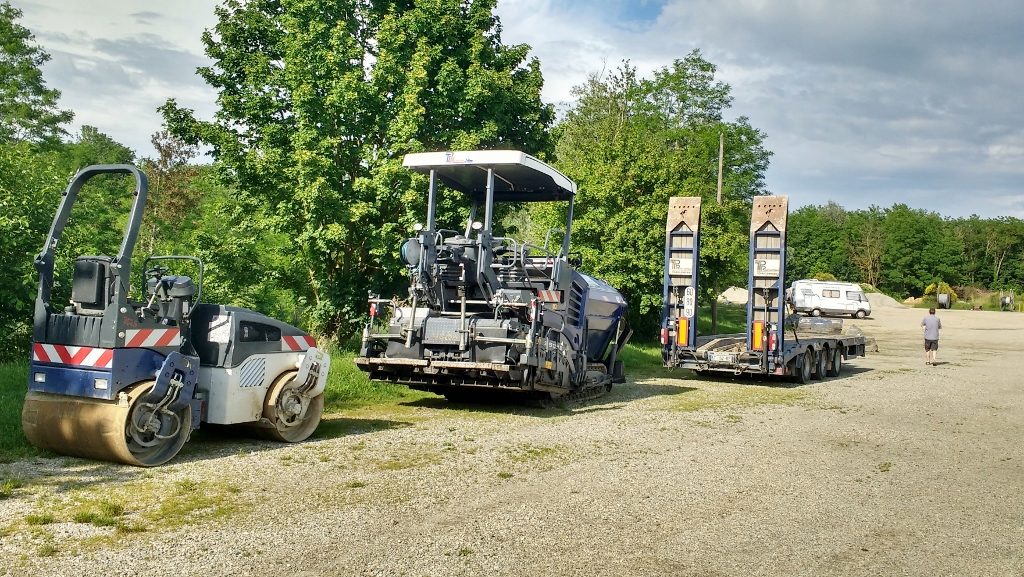
These bad boys arrived last night and started work at 7am this morning – how rude!
We’d heard the story of this place a few years back and, realising we’d be passing nearby, stopped off for a look around. Settle down folks, it’s time for a story…
Joseph Ferdinand Cheval was born into a poor family in rural France in 1836. After various jobs, at the age of 31, he became a postman to support his wife Rosalie and their two young boys. He worked nine years of rounds in local villages, before transferring to a round in Hautrives, which is surrounded by undulating land, criss-crossed with rivers and streams. His round was 27 miles long, and he walked this every day, even in the harshest of winters. His wife and one of their sons passed away, but Ferdinand kept on going on his round.
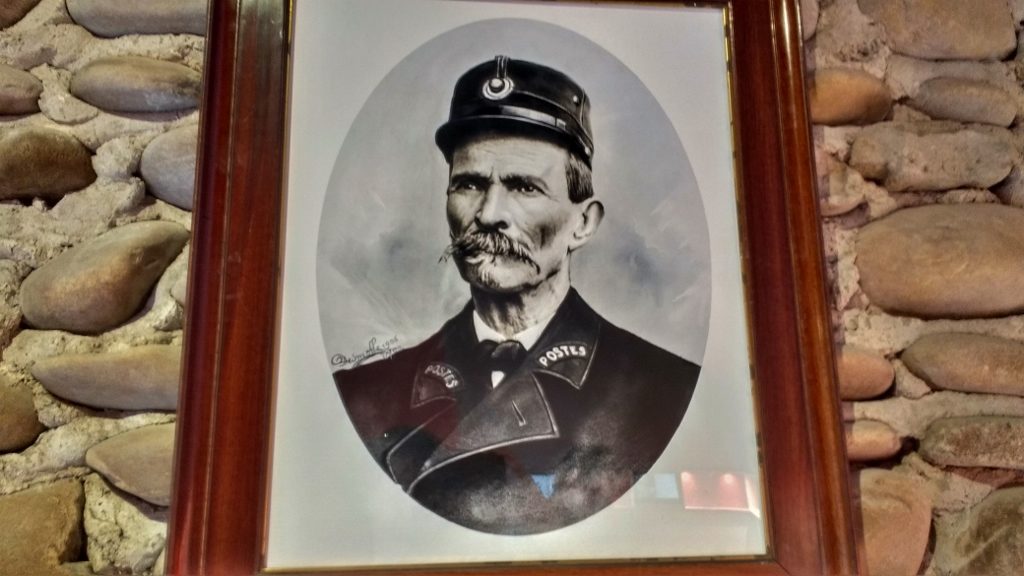
Ferdinand Cheval in his postman uniform – he dropped the Joseph for some reason
In April 1879, aged 43, he stumbled on a stone while walking his round. Intrigued by the usual errosion that time and water had shaped the stone into, he put it in his pocket and took it with him. The stone reminded him of a dream he’d had many years before of a ‘fairytale palace beyond imagining’. From then on, every day on his round he would pick up unusual shaped rocks and stones and take them home. He sketched out the front facade of a palace from his dreams and started to build it. Every day, he would walk more than a marathon delivering his post and collecting material for his palace, and every night in his back garden, where his vegetables were supposed to grow, he worked on his dream.
Needing bigger stones than ones which would fit in his pocket, he started off taking a basket, as his needs grew he would walk his postman round, then back track over it with a wheelbarrow to collect materials. In the village he was considered a mad man for filling his garden with stones, but over time he bought up neighbouring plots to make his dream come true. Still a poor man, lime and cement were the only materials he purchased. He would collect sand in his wheelbarrow and had shells sent from his nephew who lived in Marseille.

Night after night he modelled his ‘monument to obstinacy’, inspired by the countryside he walked in each day, images in illustrated magazines he delivered and eventually postcards – which began to appear from 1890. Ferdinand completed his palace at the age of 76, it took him 33 years. During this time he worked for 10,000 days, spending 93,000 hours building his palace on which he engraved ‘the work of one man’.

Ferdinand’s reminder that he alone built this and how long it took
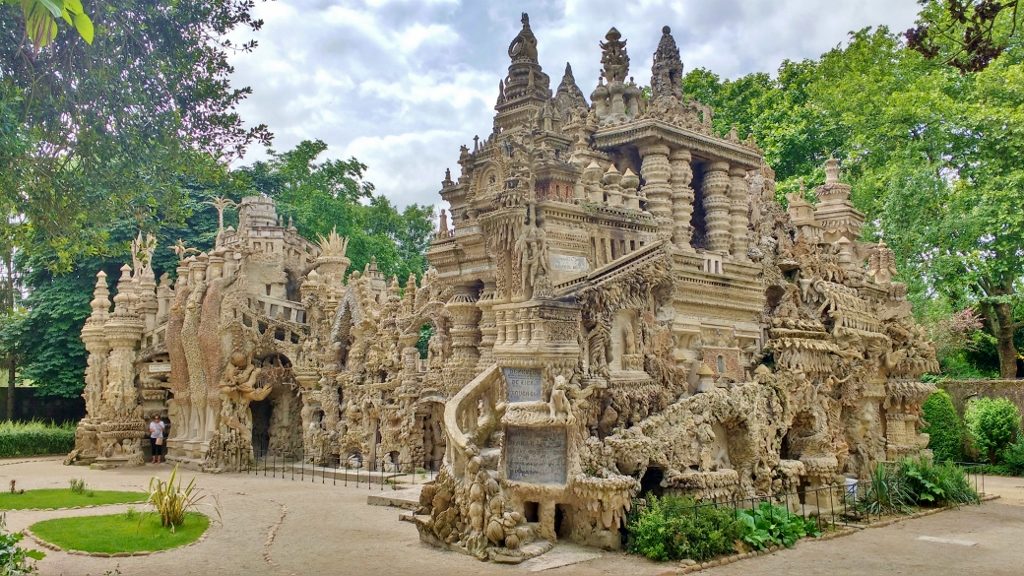
The Ideal Palace – Palais Ideal du Facteur Cheval
The amazing piece of art and architecture is only 26 metres long, 14m wide and 10m tall, but in it Ferdinand had created waterfalls and a pond, gallery walkways, a roof terrace, a niche for his trusty wheel barrow and a tomb for him to be buried in. Along the west side of the palace he created a mosque, a Swiss chalet, an Algerian house, a castle from the middle ages and a Hindu temple – all inspired by magazines and postcards, as he never left France.
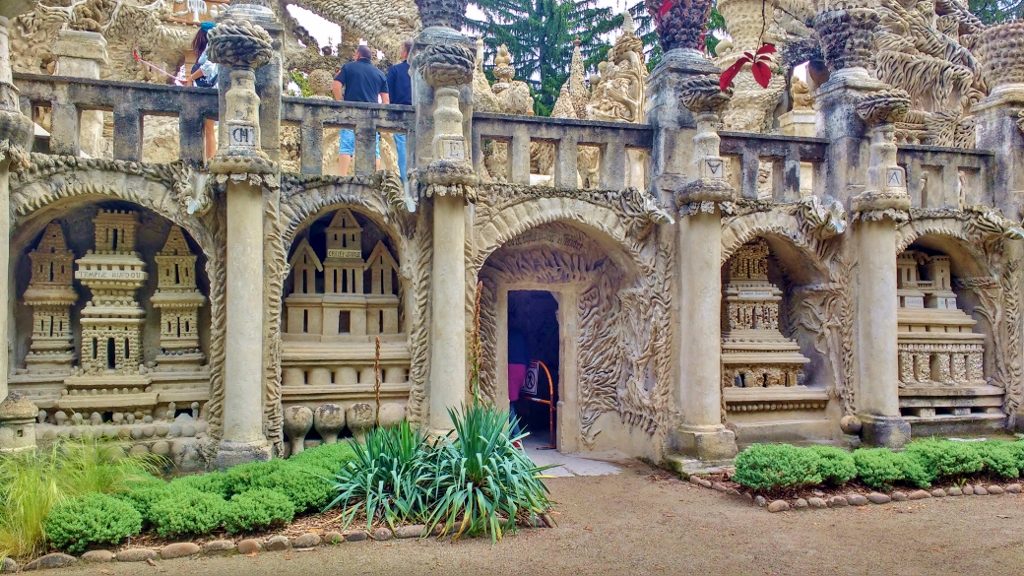
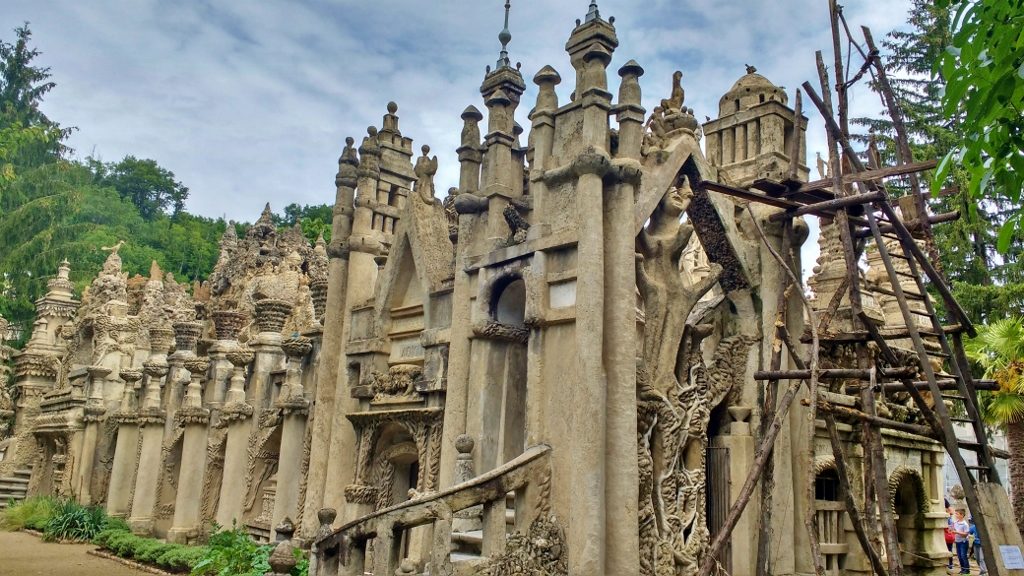
Some of the typical scaffolding used to build the palace
From 1902 Ferdinands palace appeared on its own postcards, and in each image Ferdinand, dressed in his postman’s uniform, sat with his wife, son and the family dog ‘Mignonne’. He even won a court battle over copyright of the postcard images. In 1905 the first visitors began to arrive to see the palace, and Ferdinand welcomed them in and showed them around. I think he would be amazed to see how popular it has become today, supporting several hotels and restaurants, huge parking areas, signage, a museum and many, many gift shop trinkets.
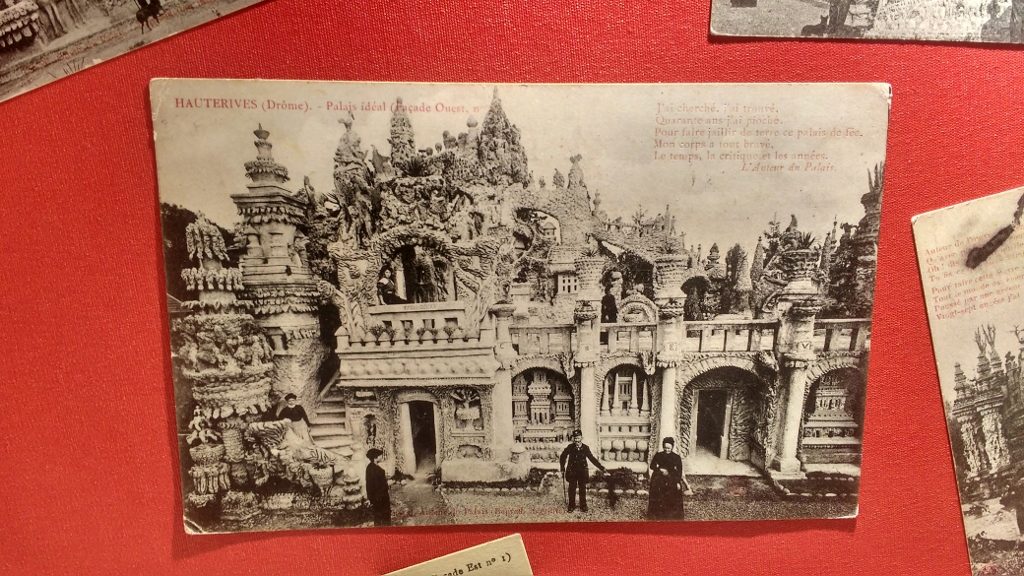
Sadly French laws would not permit him to be buried in his palace, so at the age of 76 he started work on his own tomb in the local cemetary. Equally unusual it took him a further eight years to complete it. When he passed away at the age of 88 he was buried there.

No matter how many flowers or souvenirs you put on the family grave, in Hauterives cemetery it will always look plain.
Shortly after his death in the 1930s artisits began to discover his work and came to visit. The palace was passed on to his children, but the maintenance of it was a burden so it was eventually partially bequeathed and partially sold to the village to look after. Work was underway when we visited to restore a balcony Ferdinand had built to give his visitors a better view of the palace – oh and while doing all of this he built a villa for his family to live in too.

Jay getting some ideas for our palace at home – I wonder if planning regs would be OK with this?
That is the story of the Ideal Palace, but what the story doesn’t get across is the awe that you feel when you look at this one man’s labour of love. His passion and drive, while being ridiculed by others, not only created something truly unique in the middle of rural France, but goes to show that if you set your mind to it, you can achieve anything you want.
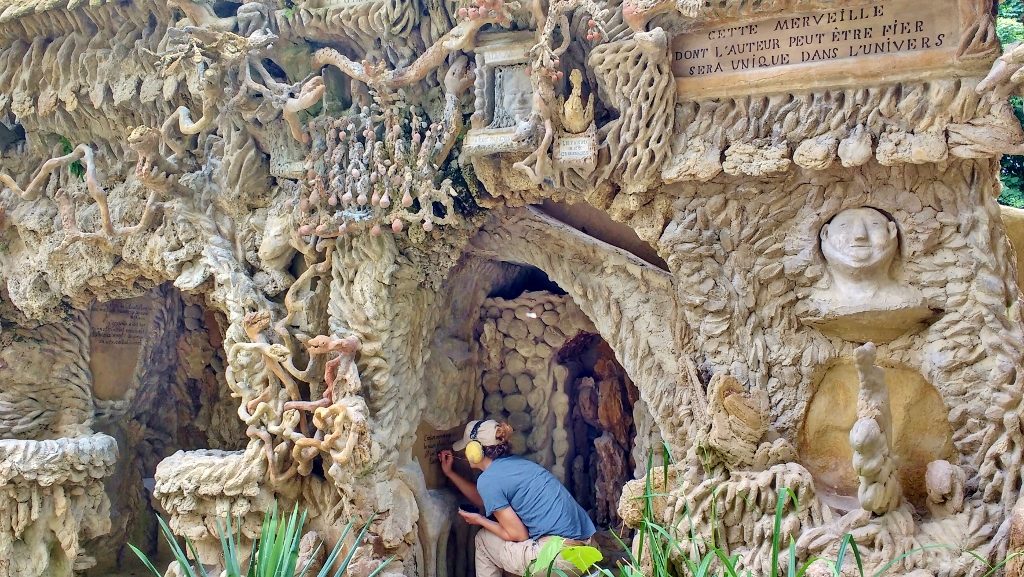
Ongoing restoration this time re-writing Cheval’s poems and phrases on the palace.
The palace reminded me so much of Gaudi’s Sagrada Familia in Barcelona, another building created from one man’s vision (at least it was planned to be that way originally). Like the Sagrada Familia, I strongly urge you to go and see the Ideal Palace if you get the chance.
Ju x

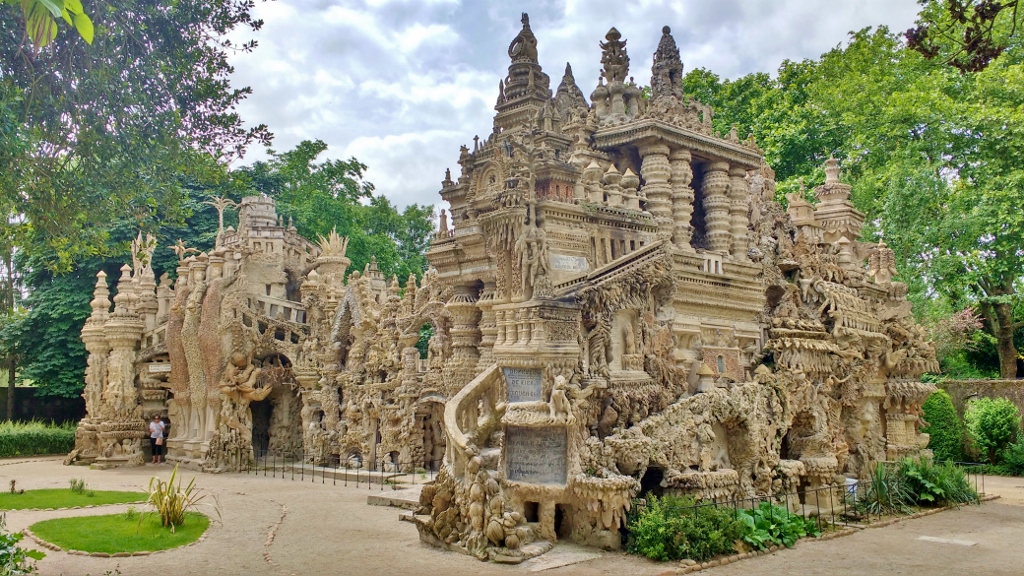


Thanks for sharing. I had never heard of this and wouldn’t if I wasn’t following you.
Bravo!
Thank you very much for this post. Beeing French, I have heard of Facteur Cheval and his amazing palace but never knew the full story. It is very interesting and very humbling to see something like this, every little diy achievement seems pale compare to that !
I loved this post and we now have this on our to do list, I too thought of Sagrada Familia when I saw the first couple of pictures .
Cathy
That’s a definite To Do (amongst all the others you keep posting…..simpler if you leave a trail of breadcrumbs for us)
Amazing….and here’s me thinking I’m something for doing our patio!!!
Lee at http://www.gohumberto.com
Thanks so much for such an interesting and inspiring post(not that I’m inspired enough to give up touring to build my own).
Keep up your great posts.
looks like a fabulous place to visit!